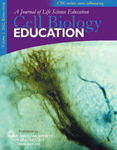Fueling Educational Reform: The HHMI Professors
Is fundamental change possible in the tradition-bound world of college and university science education? The Howard Hughes Medical Institute (HHMI) believes it is and recently announced new grants to empower individual scientist-educators—the HHMI Professors—to develop innovative approaches for changing the way they teach biology to undergraduates.
Central to the Professors program is the goal of connecting contemporary scientific research and teaching, particularly at large research universities—an objective advocated in numerous reports and studies (e.g., Reinventing Undergraduate Education: A Blueprint for America's Universities, available online at http://naples.cc.sunysb.edu/Pres/boyer.nsf/). Although virtually all universities offer opportunities for their undergraduates to conduct laboratory research, the number of students who can take advantage of such opportunities is limited. Are there untapped ways of expanding undergraduate research opportunities and integrating discovery research into the mainstream undergraduate curriculum, particularly at the introductory levels?
Another key objective for the Professors is to identify exceptional strategies for meeting the needs of students in the sciences. How can undergraduate science education be personalized to attract and retain students, including those from groups traditionally underrepresented in science? Are there practicing scientists who could significantly expand the number of students they mentor and provide the kind of academic and career counseling essential to student success? What role could scientists play in engaging graduate students and postdocs in undergraduate education while maintaining their own research, and what role could they play in helping these individuals prepare for their future roles as researcher-educators?
The HHMI also sought to support faculty who could organize and present the latest knowledge and approaches to modern science to undergraduates. Can research-active scientists be engaged in devising new educational tools and materials? Are there faculty uniquely positioned in emerging fields who could develop new teaching strategies and produce timely materials to fill important niches? How can fresh connections be established between fields, such as between biology and chemistry or between biomedical engineering and quantitative physiology?
In September 2002, the HHMI announced the appointment of 20 research-active university faculty members as HHMI Professors, who will each receive $1 million over 4 yr to undertake creative initiatives in undergraduate and, in some cases, precollege science education. These individuals were selected following a national, peer-reviewed competition involving more than 80 research institutions that were each invited to nominate two candidates. This initiative for individual faculty complements the HHMI's undergraduate grants program to institutions, which has awarded approximately $560 million for innovative science programs to 240 colleges and universities since 1988.
Although the Professors' projects are each unique, and many address a range of objectives and approaches, aspects of their work can be summarized in five illustrative categories, as follows:
Student-faculty research groups: Several Professors will significantly expand the number of undergraduates in their labs and create teams of students who will be integrated into existing research groups. In addition to providing more undergraduates with a research experience, these efforts are intended to help graduate students and postdoctoral researchers engage with undergraduates and gain teaching experience while continuing their own research.
Research courses: Another approach to increase the number of undergraduates who receive a real research experience is to create courses in which groups of students, including nonscience majors, deal with various aspects of an ongoing research project. These courses will be at advanced and introductory levels, and some will span a multiyear period to enable students to develop their own research programs.
Interdisciplinary science education: Because some of the Professors are working in new areas, at the intersection of existing disciplines, they know uniquely where these new directions are headed. Activities in this area will include new cross-disciplinary research experiences, courses, and curricula, and new course materials in areas so new that the Professors will need to create their own.
New science teaching tools: Some of the Professors have turned to creative development of teaching materials in ways that parallel their scientific work and will cover development of new computer-assisted and web-based instructional tools, and other activities. In addition tosupporting these efforts, the HHMI will help to widely disseminate successful products to the science education community at large.
Student mentoring and broadening access: One aspect of all the Professors' projects—mentoring and academic counseling—is the focus of several of the awardees' activities. Efforts will be directed at providing undergraduates, including women, students who are disadvantaged, and first-generation college-goers, and students from underrepresented minority groups, with the tools to succeed in scientific careers through mentoring, team research, and activities that build a science community.
The HHMI plans to encourage the Professors to become national resources and promote broad dissemination of their activities and results to the science education community. Additional background on the program and a list of the Professors and their projects may be found at http://www.hhmi.org/professors. This web site will be updated with information on the Professors' projects as they evolve.



